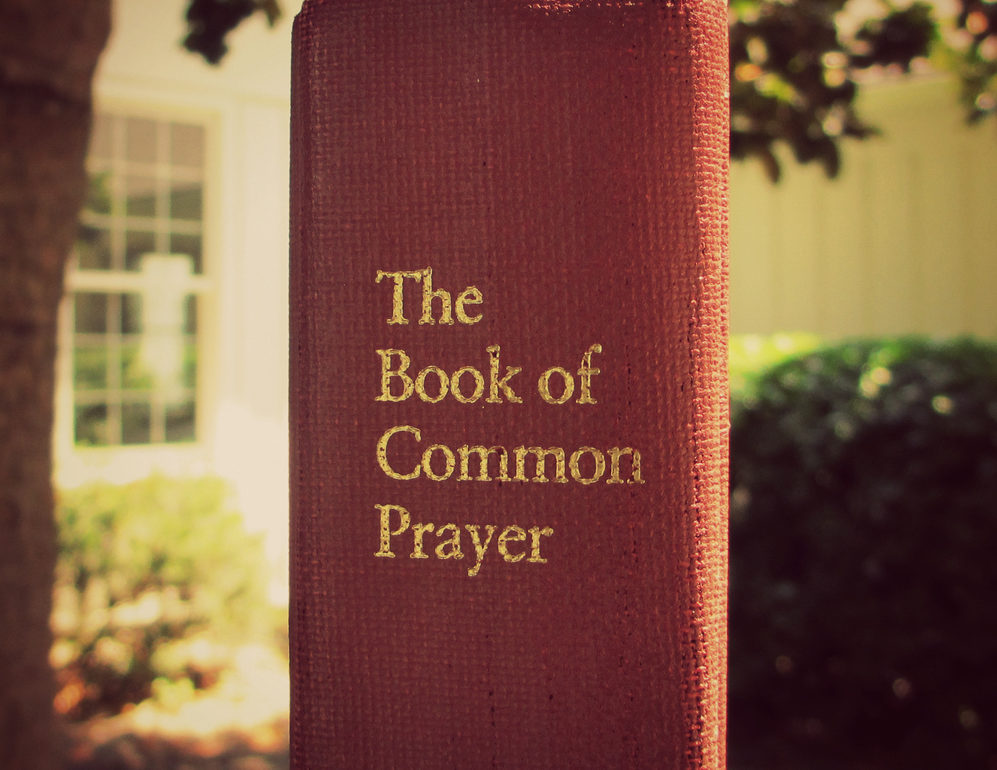Breathe new life into your devotions with the Book of Common Prayer

Daily devotions are the bedrock out of which the good life of God’s kingdom flows. Nothing will put us in touch with the good life of God’s kingdom like a regular rhythm of sitting at the feet of Jesus. If you have a daily devotional practice now, then by all means press on! God’s blessings be upon you as you seek his face from day to day, living out of his strength and sustaining yourself on the Word of Life.
But if you are struggling with your daily devotions or wish you could get back into the habit, you aren’t alone. Most Christians have heard the exhortation to some kind of daily devotional practice (sometimes called quiet time or morning prayers), and many of us have tried and failed. Daily devotions work the same as any of the other spiritual formation practices we discuss here; as always, we start small and let God draw us toward more growth as we remain faithful to small beginnings.
But maybe you’re past that. You’ve tried and succeeded in the past and managed to sustain a daily devotional practice for a few months (or years) and found that the practice dried up for you. This has happened to me numerous times over the years. I would try one arrangement of prayers and Bible reading, only to fall into a familiar cycle: excitement and (re-)starting my devotions, followed by a period of positive experience, followed by a long slide into boredom and apathy about the practice. Eventually, some hiccup in my weekly routine would cause me to “temporarily” abandon my daily devotion and weeks later I would realize that I’d stopped paying attention to God somewhere along the way.
One thing that has breathed new life into my daily devotions is the use of the Book of Common Prayer. The Book of Common Prayer (BCP) has been in circulation in Protestant Christianity since 1549, originally written as an order of worship for churches following England’s break with Roman authority in 1532. The book has since expanded to contain various orders of worship for church assemblies throughout the Christian year, for baptisms and marriage ceremonies, written prayers for many public occasions, and much more.
I’m not from the Anglican tradition; rather, my faith began in a “low church” setting where prayers were almost always spontaneous. So the idea of a book of written prayers seemed a little strange to me at first. Shouldn’t the prayers come from my own heart? Was I somehow being inauthentic to pray written prayers? But then I recalled the experience I’d had praying through the Psalms, learning to make their words my own, broadening my prayer horizons beyond the small circle of concerns I usually had. And while the BCP contains written prayers that aren’t direct scripture quotations, I found a deep, practiced wisdom of prayer that resonated with biblical theology. Reading through the Book of Common Prayer, I found myself led into praying for my own concerns and for the people in my world in ways that were deeply biblical, enriching, and stretching. I was hooked.
So I began to use the Book of Common Prayer as a sort of framework for my own daily devotions. I wanted to make sure that I didn’t fall into the trap of merely skimming the written text and then going about my day, “checking off” my prayers for the morning. I wanted to make sure my heart stayed with it, so I had to learn to pray through it slowly, digesting the prayers that I was reading and praying them from an authentic place of my own. I found that this was not difficult.
Another thing I noticed very quickly was that the BCP provided a pre-arranged selection of Bible readings for each day, woven in amongst the prayers and responses, each reading carefully arranged to ensure my involvement with the Old Testament, New Testament, Gospels, and Psalms in equal measure, covering the whole of scripture over time. Along with this, the order of prayer uses various devotional scriptures from throughout the Bible as bridges between more specific prayers and readings.
I gained the sense that I was being immersed in a tradition of prayer that reached all the way back to the Apostles, using their own words in ways that deeply resonated with the life I was living now. Far from falling into the trap of rote prayer, I found my prayer life expanding, each daily office drawing me richly into God’s presence with the words of Scripture itself, praying for people in my life in ways I’d never experienced before. I found a whole new world of daily devotions that continue to teach me two years after I began.
I hope I’ve piqued your interest enough for you to check out the Book of Common Prayer for yourself. I’m going to outline some of the things I’ve learned about praying the daily office in the next few blog articles. If you’d like more information, here’s an introduction on how to use the Book of Common Prayer for daily devotions.
May God breathe new life into your devotions and lead you deeper into the good life of his kingdom.









Leave a Comment